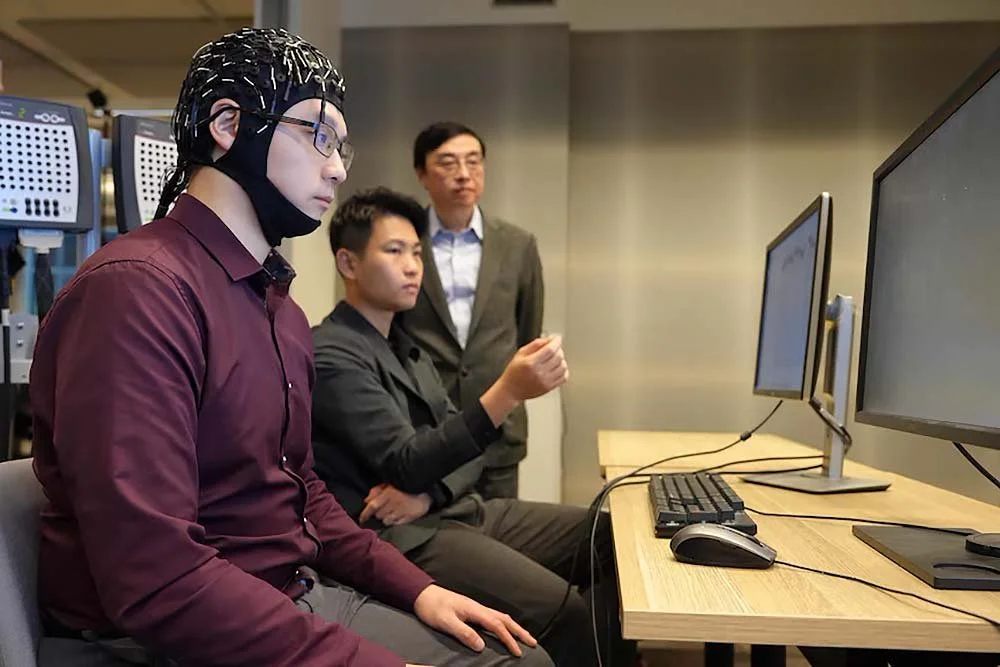Mind-reading AI: science fiction or the new human language?
What was once the stuff of science fiction is now a measurable scientific advance: artificial intelligence is now capable of decoding human thoughts, based on brain signals. This neurotechnological revolution is no longer confined to laboratories or Elon Musk's transhumanist ambitions - it's moving into the real world, with functional prototypes, concrete applications... and burning ethical questions.
At Artcare, leader in AI virtual mannequins and AI e-commerce fashion solutions, we're exploring the frontiers of creative AI, but we're also keeping a close eye on those innovations that are shaping the future of human-machine interaction. This article is in line with our forward-looking editorial line, while meeting an SEO objective around keywords like AI fashion, virtual try it on or AI R&D studio agency.
Translating thoughts into words: AI's new exploits
On June 17, 2025, an article by Sofian Nouira revealed the impressive progress made in translating brainwaves into natural language. Two scientific projects, in Australia (UTS) and the USA (University of California at Davis), have demonstrated that AI, combined with sensors or implants, can now interpret our silent thoughts with increasing accuracy.
Two approaches, one promise:
Non-invasive approach (Australia): a simple EEG headset with 128 electrodes captures brain activity as the subject reads or mimes words. The AI filters out the "noisy" signals to reconstruct a sentence.
Intrusive approach (California): electrodes implanted in the brain enable near-instantaneous vocal restitution, giving a real voice to an ALS patient.
The result: up to 75% accuracy today, with a short-term target of 90%. AI doesn't read thoughts literally, but it decodes a linguistic intention and recomposes it in real time.
Neural interfaces and AI: towards new uses
These scientific advances open up immense prospects, far beyond the medical field. For an AI capable of translating thought becomes a brain-computer interface (BCI) with multiple applications:
Augmented communication: for the speech-impaired, but also to improve fluidity in human interaction (instant translation, thought-to-text, etc.).
Thought control: control an electronic device (computer, smartphone, connected glasses) simply by intention.
Mental creation: in the future, a creative person could generate an image or 3D model simply by visualizing it mentally.
At Artcare, this raises an exciting question: what if, tomorrow, a stylist could design a virtual AI mannequin simply by imagining it?
From AI fashion to cognitive ethics
In our industry, AI fashion is already a reality: AI virtual mannequins, virtual try it oninstant personalization. Brain-AI interfaces could further accelerate this dynamic:
Creation of visual collections based on mental inspirations.
Customer feedback by simple cognitive reaction to a style or cut.
Immersive e-commerce experiences where thought guides navigation.
But this technological dream is accompanied by a number of grey areas. Who will own this brain data? Will it be monetized like our cookies? Can we really sacrifice the privacy of our thoughts on the altar of digital convenience?
As Shoshana Zuboff already pointed out in The Age of Surveillance Capitalism, attention has become a commodity. The next step could be consciousness itself.
Artcare, on the lookout for creative and responsible AI
At Artcare, we believe in AI that enhances human creation without ever robbing it of its meaning. Our AI R&D studio agency actively explores new cognitive interaction and modeling tools, with the mission of :
Make fashion more inclusive, intuitive and expressive with AI virtual mannequins.
Develop "virtual try it on" experiences where technology serves human sensibility.
Anticipate ethical mutations, to build AI that respects privacy, even neuronal privacy.
Conclusion: when thinking becomes creating
Mind-reading AI is already here. Imperfect, still in its infancy, but radically transformative. It doesn't replace human beings, but rather translates their intentions. A revolution that, in the world of fashion as elsewhere, will redefine the modalities of expression, creation and connection.
Whether you're an innovative brand, a designer, or a school looking for new educational horizons, Artcare can help you make the transition to augmented, imaginative and responsible fashion.
Join the next session of the Artcare Academy
Discover how AI can transform your visual storytelling and affirm your brand identity.
Join the training
